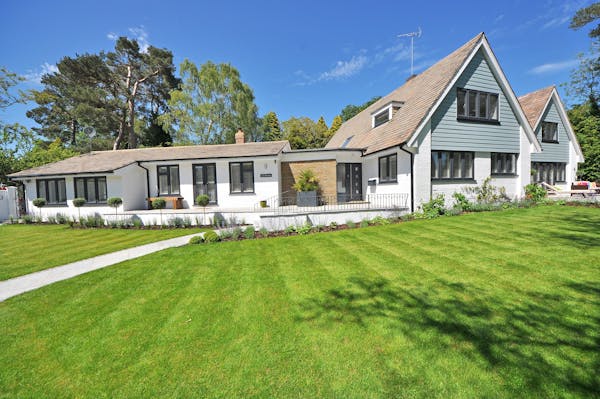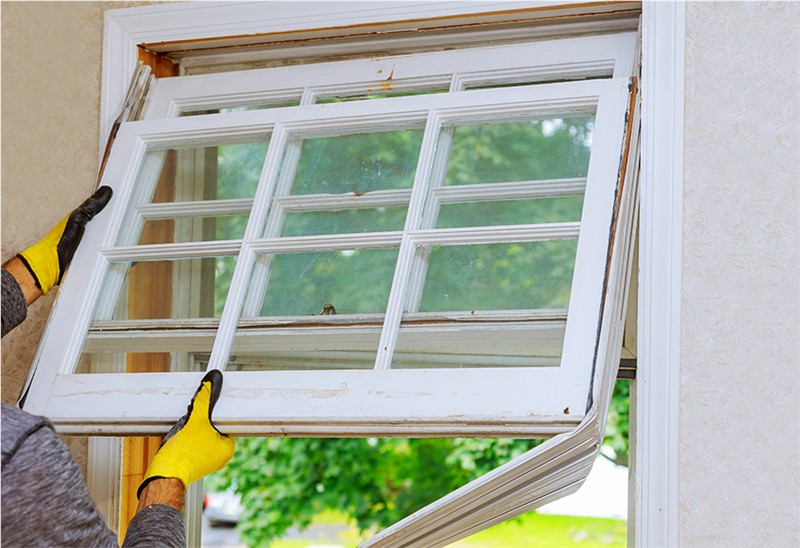Five Classic Patterns Reimagined in Contemporary Wallpaper
Five Classic Patterns Reimagined in Contemporary Wallcoverings
#1 Paisley

In her article “Paisley: The story of a classic bohemian print” for BBC Culture, Lindsay Baker offers a brief history of the “iconic motif.” Baker writes that paisley began in Ancient Persian and India, but would later travel to Europe in the 1700s, “adorn the bandanas of cowboys” and “usher in the hippy era.” Original paisleys featured a “droplet-like motif” called the boteh, which was “thought to have been a representation of a floral spray combined with a cypress tree.” The latter is an ancient symbol for “life and eternity.” Beginning in the eighteenth century, the East India Company carried paisleys from Asia and the Middle East into Europe. Immensely popular in the UK, shawls featuring the pattern were produced in Wales and Scotland. Scotland’s town of Paisley in Renfrewshire is still famous for its “Persian pickles” print.
Decades later, artists, designers and writers in Victorian England transformed the print into a symbol of rebellion. Lindsay Baker writes that “William Morris and the Arts-and-Crafts movement adapted the print, with William Holman Hunt and other Pre-Raphaelites depicting sumptuous paisley textiles in their paintings.” In the early twentieth century, paisley “became an integral part of the Aesthetic Movement and the Art Nouveau Movement – and shorthand for sophisticated, arty bohemianism.” While it fell out of fashion between the 1920s and the 1950s, a resurgence occurred in the 1960s. During this time, paisley was “emblematic of the ‘summer of love’ and the often eye-watering aesthetic of the psychedelic era.” Quoting designer Veronica Etro, Baker praises paisley’s longevity. Etro itells Baker that paisley “‘always remains appealing, exotic and cool at the same time.’”
Contemporary Paisley Prints We Love

There are three contemporary paisley prints that particularly stand out. First is the Shirala Paisley from Schumacher in their Delft and Rose colorway. Delicate and carefully detailed, this paisley features alternating rows of two different designs. Both curl softly at the tip with a series of tiny flowers throughout. One is a single shape while the other includes a secondary droplet with a dense border inside the first droplet. According to Schumacher, this paisley is based on a “traditional Indian block print.” Both timeless and perfect for today’s interiors, Schumacher’s Shirala Paisley is composed of “intricate, multicolor floral patterns” neatly arranged in a grid. This pattern is from their Palampore collection, which includes a series of other stylized, vintage-inspired prints and designs.
The other two contemporary paisleys we love are the Kashmir Paisley by Peter Dunham and the Kiribati Ikat Print from Schumacher. Schumacher’s Kiribati Ikat print was inspired by traditional ikat dyed fabrics from India. It features a series of abstract paisleys and geometric diamond shapes, available in vibrant colorways like aquamarine and coral. Last is classic paisley in fresh colorways like bright green and ivory slate. According to Peter Dunham Textiles, the brand’s Kashmir Paisley “was inspired by a block print that Peter discovered as a teenager backpacking in India.”
#2 Chintz

Before the Dutch and Portugese exposed European designers and craftsmen to the floral pattern, chintz was rendered much more simply in 17th century India. In her article “Chintz 101: A Primer for the Print That’s Back in a Big Way” for Vogue, Virginia Van Zanten offers a brief history of chintz. Van Zanten writes that chintz began as a “glazed Calico, a type of cotton originally from Calicut, often printed or painted with large florals.” By the late 1700s, chintz had made its way to England and France. Chintz was so popular in England and France that the governments of both countries “temporarily banned its sale to protect their own textile mills,” which could not recreate the pattern on their own. The palace at Versailles ignored the ban, which is why royal fashions and furnishings from the period feature quite a bit of chintz.
It was around this time that chintz became popular in the American Colonies as well, with Washington adorning the bedrooms of Mount Vernon with floral wallpapers. In the nineteenth century, European textile mills and wallpaper manufacturers finally began producing chintz. However, these chintz patterns were “Westernized from traditional Indian tree of life imagery to larger and looser floral motifs.” At the time, chintz wall coverings and upholstery fabrics were coated. Because of this, they were easy to maintain and very popular with “the hygiene-obsessed Victorians.” Today, “just about any big floral pattern is dubbed chintz,” whether it is glazed or not. Chintz finally fell out of favor in the 1950s. While some designers, decorators and consumers stuck with chintz through the 1960s, it did not regain widespread popularity until the 1980s. Now, chintz wallpapers are back in fashion thanks to interior design trends like Grandmillennial, “granny chic” and French country.
Contemporary Chintz Prints We Love

Today, designers all around the world embrace chintz, touching on its history while reimagining the pattern in exciting new ways. Three of our favorite chintz wallpapers currently available are Indian Chintz from Peter Dunham Textiles, Jacobean Floral Trail from Seabrook and Clementine Chintz from Sanderson. Indian Chintz in Pink/Orange is perhaps the most traditional of the three, though the magenta, mustard, indigo and emerald green tones make it feel timely. Appearing hand-drawn, this delicate wallpaper features a number of different flowers. One even resembles a paisley motif!
Jacobean Floral Trail wallpaper in Black from Seabrook is thoroughly modern. We love the wood-block appearance, graphic shapes and black and white tonality. Clementine Chintz from Sanderson features tropical motifs but feels very Victorian. In their description, Sanderson notes that this painted wallpaper “evokes the feeling of Amazonian jungles with hummingbirds and exotic flora.”
#3 Plaid

Originally termed “tartan” by the Scots, plaid can now be found on throw pillows, quilts, couches, wallcoverings, rugs, blazers and dozens of other homeware and fashion items. In her article “A Brief History of…Plaid” for Elle Decor, Lindsey Desimone explains where plaid comes from and how it crossed the ocean to become so popular in the US. Desimone writes that Scottish clothiers first began weaving the tartan we recognize today in the 1500s. At that time, tartan was “worn across the left shoulder as part of the traditional costume” of 16th century Scots.
Tartans were also worn by the Scottish military in the 18th century. Tartan became plaid once “British and American manufacturers started replicating the tartan print.” Writing for Smithsonian Magazine, Danny Lewis notes that today’s tartans replicate the criss-cross pattern of vertical and horizontal lines but do not include “centuries of symbolic meaning” in their designs.
Contemporary Plaid Prints We Love

Our favorite contemporary plaid prints include Minerva Plaid wallpaper in Hyacinth from Schumacher, Blandin wallpaper from Fabricut in Dove and Mackenzie wallpaper in Dolphin from Stroheim. According to Schumacher, the company’s Minerva Plaid has a “breezy, unfussy spirit and a soft ombre effect” which makes it perfect for serene spaces. This delicate four-color plaid reportedly “evokes the watercolor effects of the original hand-painted pattern.” Our favorite colorways for this wallpaper are Hyacinth (pictured above) and Peacock.
Fabricut’s Blandin wallpaper in Dove is a more traditional plaid. Blandin’s hatched lines give it a fuzzy appearance, almost like a true woven fabric. Stroheim’s Mackenzie wallpaper in Dolphin achieves a similar effect. Despite the fact that Mackenzie is printed on paper, this wallcovering looks just like wool.
#4 Chinoiserie

A Western play on Eastern motifs, Chinoiserie refers to European-made goods that reference Chinese designs. This can include furniture, wallpaper, ceramics and other homeware. In her article “The Complex History of Chinoiserie” for House Beautiful, Stefanie Waldek notes that the popular style can be considered controversial due to its appropriation of Chinese design. Waldek writes that 17th and 18th century Europeans had “an overwhelming fascination with China…which fueled an immense demand for East Asian goods.” However, Chinese porcelain and wallpapers did not always mesh well with European design styles. As such, when “‘European manufacturers took advantage of this craze,’” they made pieces that “‘matched European taste rather than respecting the Chinese originals.’” Chinoiserie exploded across Europe once the French King Louis XIV decorated his Trianon de Porcelaine in Japanese and Chinese motifs.
All across the continent, European designers adapted Chinese and Japanese motifs, scenes and symbols. The style “fell out of Vogue” during the 19th century when tensions between the Chinese and British spiked. Chinoiserie came back into fashion in recent decades, filling homes and closets across the US. Though there are “‘elements of cultural appropriation at play,’” Waldek notes that “‘the intention is not to ridicule or degrade, but to imitate and celebrate a distant culture.’”
Contemporary Chinoiserie Prints We Love

Our favorite Chinoiserie wallpaper patterns include Scalamandre’s Sagimai, which the company describes as a “toile-like motif.” This wallpaper features “beautiful blossoming trees, layered mountain tops, and cranes taking flight.” Our favorite colorway of this Chinoiserie wallpaper is Charcoal because it is understated, elegant and wintery. Other favorites include Nicolette Mayer’s Infinity in Mod Slate and the classic Song Garden from Schumacher in Porcelain.
#5 Toile

Last on our list of classic prints is toile. Named after “Toile de Jouy,” this whimsical print was popularized by Christophe-Philippe Oberkamp in mid 18th century France. Oberkamp was inspired by the quaint yet spirited sensibility of Rococo art, especially the paintings of Fragonard. In her article “Ode de Joy: A Brief History of Toile” for Architizer, Katherine Wisniewski that Oberkampf’s “most prolific designer Jean Baptiste Huet” is jointly to blame for “toile’s household domination.” During their careers, Oberkampf and Huet trademarked over 30,000 different toile designs.
These “novel and playful” designs largely featured pastoral scenes of “France’s landscape.” Some, however, referenced historic events and contemporary French celebrities. Later prints “drew on the landscapes of both Jerusalem and Egypt.” Today’s toiles — some of which include renderings of the New York skyline and LA eateries — honor this heritage. Artists of our time have used toile as political commentary, nostalgic references to their own neighborhoods and campy vignettes of modern life.
Contemporary Toile Prints We Love

Our favorite contemporary toile prints include two Schumacher wallpapers and a third by muralist Melissa White for Zoffany. Muralist Melissa White designed Zoffany’s Peacock Garden Wallpaper as part of her Arden Collection for the brand. This print was inspired by White’s work replicating Elizabethan wall paintings in the UK. Other muralistic wallpapers designed by White which include “Emily’s Garden” and “Tall Trees.” Resembling a lush Indian garden, this Zoffany toile wallpaper depicts peacocks with pagodas and fruit trees.
The first of two toile wallpapers by Schumacher is the brand’s Chariot of Dawn print. According to Schumacher, this print was designed as a “reinterpretation of a neoclassical toile from the 1780s.” This print references Greek and Roman mythology, with “Apollo driving his four-horse chariot” and Daphne in the foreground. Second is Schumacher’s Plates & Platters wallpaper, which we love in the neutral colorway. This trompe l’oeil toile wallpaper features a series of serving dishes, each of which is decorated with a different pastoral scene.







